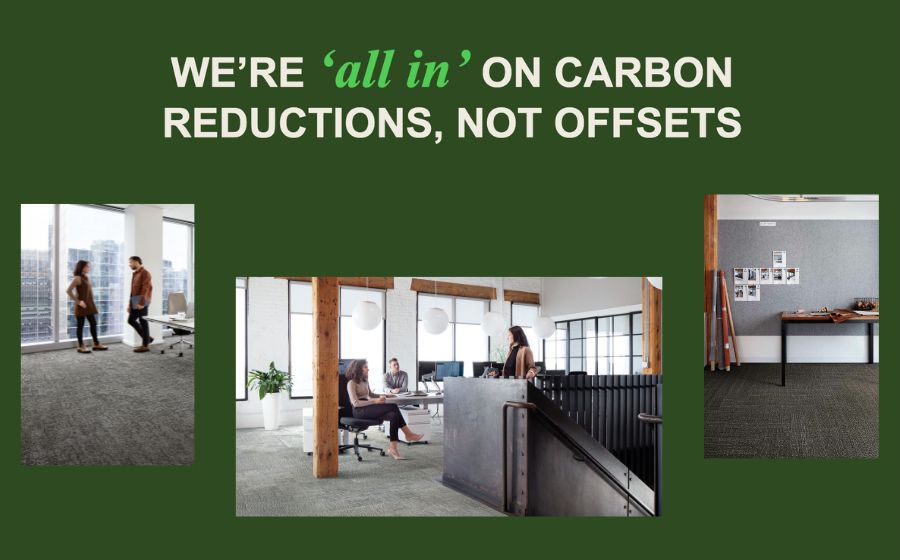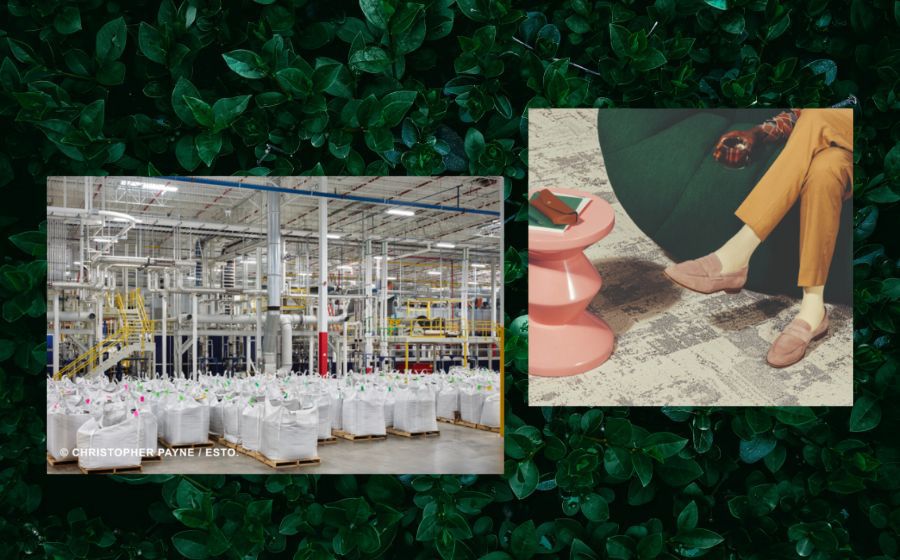We are at an inflection point in our global climate crisis. 30 years ago, our founder, Ray Anderson, reckoned with the impact industry was having on the earth and her people, and he formed an unwavering commitment to showing that business could and should do better. The DNA of our company evolved with Ray’s epiphany, and Interfacers across the globe have been united behind a commitment to sustainability ever since.
Over the years, Interface has celebrated impressive milestones in our sustainability journey. We showed how manufacturing facilities could behave like forests, literally restoring the ecosystem. We made investments in the recyclability of our products. We made investments in better, more sustainable materials. And, most notably, we launched carbon negative carpet tiles.

Harnessing our legacy of bold approaches
Carbon negative carpet tile changed everything for Interface. We proved that it’s possible to store more carbon than we emit.
Here’s what we know for sure: absolute emission reduction is critical to meet the climate crisis. Combined with a commitment to storing carbon in our products, we believe we can do more than just meet the climate crisis—we can lead the way to solving it.
We want to challenge ourselves and others to become carbon negative, enterprise wide, without offsets. It’s time for us all to back up our words with investments in solutions that accelerate carbon reduction and storage. So, we’re investing even more in direct impacts, not offsets, building on our 30 years of experience driving real sustainability outcomes.

Focusing on reduction, not offsets
Our carbon plan is simple: Avoid. Reduce. Store. Inspire.
We have science-based targets to achieve by 2030, and a goal to be a carbon negative enterprise by 2040, both without offsets. We will continue to avoid, reduce, and store as much carbon as we can in the manufacture of our products, our business operations, and our supply chain. And we want to continue to inspire industry and partner with others to create a ripple effect, accelerating collective action and direct impacts.
Ultimately, much of this isn’t completely new. Offsets have never been tied to our carbon goals. We’ve always known that investments in offsets were an interim step, and that emission elimination and carbon storage were required to meet our objectives. So, we’re channeling our investments into new R&D and innovation initiatives—replacing offset investments—to drive direct impact and reductions to meet our bold goals. As a result, we are:
- Reimagining product development and manufacturing, as well as the raw materials we use, to achieve our carbon reduction and carbon storage goals.
- Reducing the carbon footprint of our products through manufacturing and raw material innovations and increasing recycled content.
- Increasing the bio-based materials in our carpet tile products to accelerate our path to achieving our science-based targets.
- Exploring opportunities and partnerships in our supply chain to address scope 3 emissions in the future.
- Identifying and driving commercial adoption of circular models across our product categories.
This is just a starting point. As we’ve always done, we will learn as we go. We have never claimed to have all the answers. In fact, when we took our first steps on our sustainability journey all those years ago, we had almost no answers. What we did have was a willingness to acknowledge that we, collectively, had a problem, and the seeds of a plan for how to address it.
What we also have is a passionate leadership team and the most talented, committed teammates in the industry. From our CEO, Laurel Hurd, to our Chief Innovation & Sustainability Officer, Nigel Stansfield, our leaders are aligned behind this bold approach, and they’re tapping into each of us to ensure it comes to life. I am confident with their expertise and contagious optimism at the helm, we will succeed.
We look forward to sharing more as our strategy unfolds. We believe in sharing our successes and our learnings as we go. Transparency is critical to ensure we are creating that ripple effect that Ray staked his legacy on. This is how we’ll solve the climate crisis. Together.